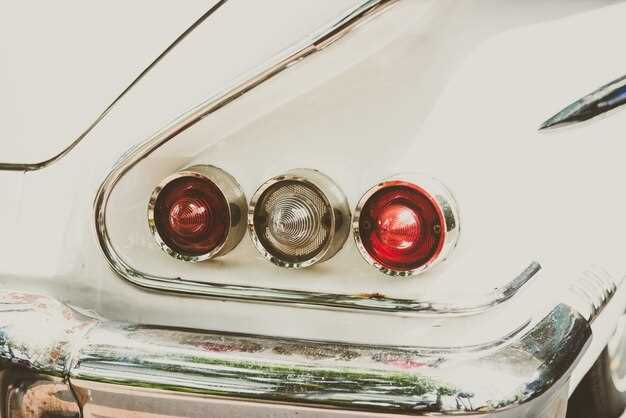
Within the vast tapestry of automotive history, some vehicles have become legendary, while others have faded into obscurity. These forgotten classic cars, often overshadowed by their more famous counterparts, hold incredible stories and unique designs that deserve to be celebrated. Exploring these hidden gems can unveil a rich heritage that continues to inspire car enthusiasts and collectors around the world.
From innovative engineering to striking aesthetics, each of these classic cars represents a specific moment in time when creativity and craftsmanship thrived. Many of these vehicles were produced in limited quantities or by manufacturers that didn’t survive beyond a decade, making them particularly rare and sought after. This article will journey through the lesser-known models that provide a fascinating glimpse into the automotive past.
Identifying these vehicles not only helps preserve their legacy but also enriches our understanding of the evolving landscape of the automotive industry. By unearthing these classic cars that time forgot, we celebrate the ingenuity and passion of those who built them. Join us as we delve into the world of forgotten automotive treasures, where each car has a story waiting to be told.
Classic Cars That Time Forgot: Hidden Automotive Gems
Over the decades, countless automobiles have graced the roads, yet some have faded into obscurity despite their remarkable engineering and design. These classic cars, often overshadowed by more famous models, present true hidden automotive gems worth exploring.
One such gem is the 1953 Buick Skylark. Known for its sleek lines and elegant interiors, this model was a luxurious offering from Buick, yet it remains relatively unknown today. With only 1,690 units produced, the Skylark stands out for its distinctive design and powerful V8 engine, making it a true collector’s item.
Another intriguing example is the 1970 DeTomasso Pantera. This Italian-American sports car combined Italian styling with an American V8 engine, offering both performance and distinctive aesthetics. Despite its capabilities, the Pantera lacks the recognition of its contemporaries, making it an appealing choice for enthusiasts seeking something unique.
The 1966 Sunbeam Tiger is often overlooked in discussions about classic performance cars. Equipped with a powerful V8, the Tiger provided exhilarating driveability and handling. Its compact design and lightweight frame were ideal for spirited driving, yet it remains largely forgotten in the shadow of more celebrated British sports cars.
Finally, the 1971 Jensen Interceptor deserves a mention. This British grand tourer boasted a combination of striking design, luxury, and performance, yet it did not gain the mainstream popularity of other models. With its powerful Chrysler engine and opulent interior, the Interceptor is a splendid representation of 1970s automotive ingenuity, waiting to be rediscovered by collectors and car enthusiasts alike.
These classic cars, with their unique features and history, deserve recognition. By shining a light on these hidden automotive gems, we celebrate the diversity and creativity that have defined the automotive world through the years.
Identifying Rare Classic Cars Worth Restoring
Restoring classic cars can be an exciting and rewarding venture, especially when it comes to rare models that hold historical significance or collectors’ interest. Identifying these hidden gems requires a keen eye and understanding of the automotive landscape.
First, research the automotive brands and models that have a reputation for rarity. Look into discontinued series, limited editions, or vehicles that were produced in low quantities. The most sought-after cars often come from manufacturers known for innovation or performance, such as Ferrari, Porsche, or certain American muscle cars.
Next, focus on the vehicle’s condition. A car with a solid frame and minimal rust typically has a better restoration potential than one with extensive damage. Also, verify that the car retains its original parts, as authenticity can significantly increase its value. Documentation, such as original paperwork, service records, and previous ownership history, can also enhance the car’s desirability.
Consider the market demand for specific models. Some vehicles may seem rare but have little interest from collectors, while others might not be as rare but are highly coveted. Follow auctions, forums, and classic car shows to gauge interest levels and pricing trends for different models.
Pay attention to unique features that set a vehicle apart. Special trims, factory options, or historical significance linked to the model can contribute to its rarity. Cars with racing heritage or those tied to significant events are often more appealing to enthusiasts.
Lastly, consult with experts and join classic car clubs or forums. Engaging with seasoned collectors and restorers can provide insights into which cars are worth investing time and resources. These communities often share valuable information regarding parts availability and restoration tips, making it easier to tackle a project.
Understanding the Market for Forgotten Automotive Models

The market for forgotten automotive models presents a unique opportunity for collectors and enthusiasts alike. These vehicles, often overshadowed by more popular counterparts, can hold significant value both financially and culturally. Understanding this market involves several key factors.
- Rarity and Production Numbers: Many forgotten models were produced in limited quantities, making them rare finds. Researching production numbers can help establish a model’s scarcity, which directly influences its market value.
- Condition and Restoration Potential: The physical condition of a vehicle is critical. Models in excellent condition can command higher prices, while those in need of restoration may offer potential for appreciation if restored properly. Evaluating restoration costs versus potential market value is essential.
- Historical Significance: Some forgotten cars may represent pivotal moments in automotive history or innovation. Understanding their context–such as technological advancements or cultural impact–can enhance their desirability and value among collectors.
- Market Trends: Keeping an eye on the latest trends in the classic car market is crucial. Popularity can increase for certain brands or models over time, shifting the focus of collectors. Monitoring auctions and sales data can provide insights into emerging interests.
- Networking and Community: Engaging with automotive communities, online forums, and classic car shows can provide valuable information about forgotten models. Networking with other enthusiasts can lead to opportunities for buying or trading rare vehicles that may not be widely marketed.
- Documentation and Provenance: A well-documented history can significantly enhance a vehicle’s appeal. Original paperwork, service records, and past ownership details can provide authenticity, increasing a car’s market value.
In conclusion, the market for forgotten automotive models is complex and multifaceted. By understanding the factors that influence value and desirability, collectors can navigate this niche effectively and uncover hidden gems that may become the classics of tomorrow.
Tips for Finding and Purchasing Neglected Classic Vehicles

When searching for neglected classic vehicles, start by researching local car shows, swap meets, and auto expos. These events often feature vintage cars and provide opportunities to network with other enthusiasts who may know of hidden gems for sale.
Online platforms can be invaluable for locating forgotten classics. Websites such as Craigslist, Facebook Marketplace, and specialized classic car forums often list vehicles in need of restoration. Set up alerts for specific models to stay informed about new listings.
Consider approaching local car clubs or classic vehicle organizations. Members frequently have leads on projects that owners are willing to part with. Engaging with these communities can also give you access to valuable knowledge about particular makes and models.
Expand your search to rural areas where classic cars may be more abundant. Owners in less populated regions may not realize the value of their vehicles, leading to better pricing. Drive through small towns and don’t hesitate to stop and inquire about any classic cars you see parked or in yards.
When you identify a potential purchase, conduct a thorough inspection. Look for rust, structural damage, and missing parts, which can impact restoration costs. It’s wise to bring along someone knowledgeable about classic cars to help you evaluate the vehicle’s condition accurately.
Don’t rush into a purchase. Take your time to compare prices, evaluate different options, and ensure that the vehicle fits your restoration goals and budget. Historic vehicle values can fluctuate, and patience can lead to better deals.
Finally, build a solid relationship with the seller. Understanding their story, how they acquired the vehicle, and why they are selling can provide insights that might influence your decision-making. This connection can sometimes also lead to negotiated prices that favor both parties.
